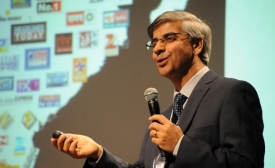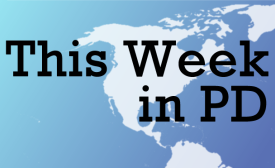public diplomacy
The House is moving to overhaul the handful of taxpayer-funded media organizations, but critics say the changes would turn the Voice of America into a tool for pro-western propaganda. Last week, the House Foreign Affairs Committee unanimously passed a bill to make “dramatic reforms” to the Broadcasting Board of Governors (BBG), which oversees the government-backed outlets.
I had the pleasure of speaking with Mike Ardaiolo of the Public Diplomat, a podcast and website produced by students and scholars at Syracuse University’s public diplomacy program. I speak about my research into how digital platforms have been incorporated into US public diplomacy, and how this reflects broader institutional shifts in the practice and discourse of PD.

In this podcast, Master of Public Diplomacy candidate Bryony Inge interviews Dr. Daya Thussu, international communication professor at the University of Westminster in London.
US computer chip giant Intel is to invest close to $6 billion in upgrading its Israeli production facilities, Israeli Economy Minister Naftali Bennett said on Thursday.
Legislation to restructure the organization overseeing the government-funded media outlet Voice of America advanced in the House this week, a measure that proponents say would bring it closer in line with U.S. policy but critics fear could turn the storied news service into a a propaganda tool.

Social media and new technology have spawned a new generation of digital diplomats. Meanwhile, governments try to defend against social media campaigns.
Manifestoes about U.S. “decline,” have become a publishing juggernaut. But this literature is demolished in a beautifully written, persuasive new book from Bruce Jones, the Brookings Institution senior fellow. In Still Ours to Lead: America, Rising Powers, and the Tension between Rivalry and Restraint, Jones explains that the declinists have it all wrong.
The US Department of State is transitioning into a digital context and public diplomacy is evolving in the process. Michael Ardaiolo discusses the U.S. public diplomacy’s shift toward a digital world with Dr. Craig Hayden.







